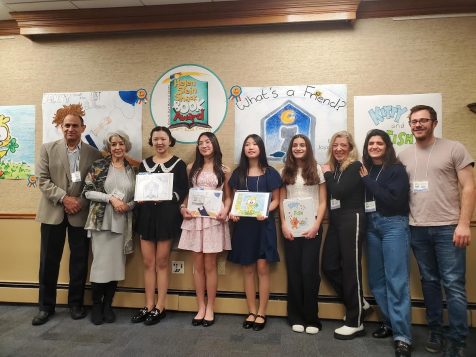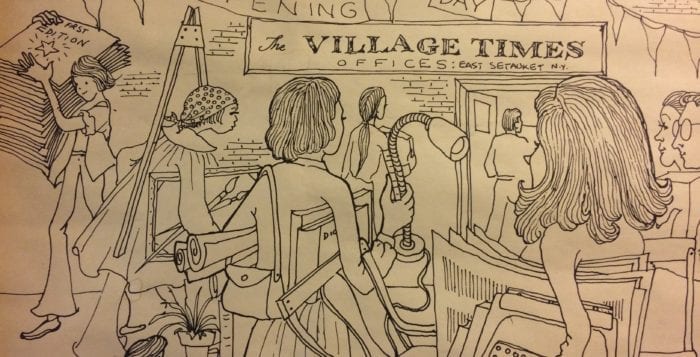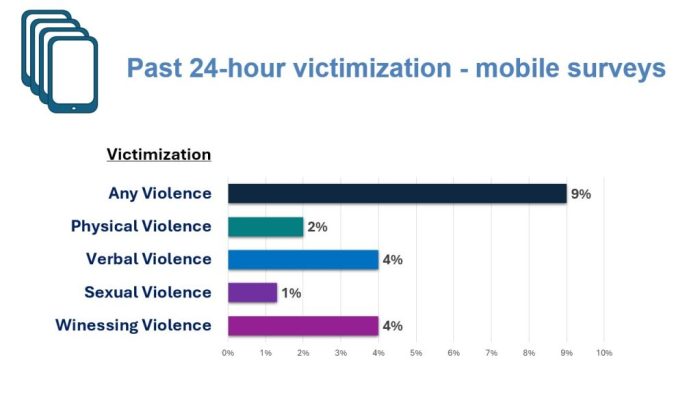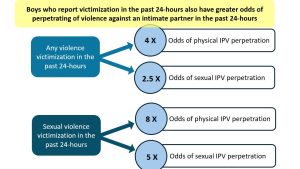On April 7, board members and staff of Emma Clark Library in Setauket, along with the family of the late Helen Stein Shack, local elected officials, and representatives from the Three Village Central School district, honored teens at the 11th annual Helen Stein Shack Picture Book Award.
The Helen Stein Shack Book Contest calls for teens in grades 7 through 12 who live in the Three Village Central School District to create a children’s picture book. Each entry could be the work of a single author/illustrator or a collaborative effort between an author and an illustrator. The contest was divided into two grade categories, grades 7 through 9 and grades 10 through 12, with one First Prize Winner and one Second Prize Winner selected from each group.
Yen Lo, an 8th grader at Murphy Junior High School, won first prize in the Grades 7-9 category for her children’s book “Benny and the Lost Balloon” while Joyce Lee, a 10th grader at Ward Melville High School, won first prize in the Grades 10-12 category for “What’s a Friend?”
Second Prize in the Grades 7–9 category went to Athie Kim, an 8th grader at Murphy Junior High School, for “Dinky” while Elizabeth Wright, a 10th grader at Ward Melville High School, captured second prize for her book, “Kitty and Fish” in the Grades 10-12 category.
Library Director Ted Gutmann, along with the family of the late Helen Stein Shack, presented the winners’ books — bound and added to the Library’s Local Focus Collection — along with $400 checks to first prize winners Yen Lo and Joyce Lee and $100 checks for second prize winners Athie Kim and Elizabeth Wright. “The artwork in all of them and the stories are just great,” he remarked.
Suffolk County Legislator Steven Englebright, Brookhaven Town Supervisor Dan Panico, and a staff member from Assemblywoman Rebecca Kassay’s office were in attendance to present certificates to the winners. The winners also received certificates from New York State Senator Anthony Palumbo and Brookhaven Town Councilmember Jonathan Kornreich.
The award is named in honor of Helen Stein Shack, whose family approached the Library with the idea of establishing an endowment as a tribute to their mother, a teacher and lover of libraries, especially Emma Clark Library. Their gift covers the cost of the awards and passes along Ms. Shack’s joy of reading and lifelong learning to future generations.
Ed Taylor, Ms. Stein Shack’s son, told the guests that when he reflected on the contest, he thought of what he called the 3 C’s:
The first being creativity, of course. If you go look at the books, the first thing that strikes you is the artistic talent of these kids…they’re also very creative at storytelling. It’s not easy to invent your own story and even more difficult to invent a story and tell it in language of kids that are 10 to 12 years younger than you are…The second “C” is courage. Even though you have all that talent, it’s still not easy to put your stuff out there and have it judged by others…I didn’t have a third “C” so I thought and I thought, and then it hit me – cash!
Mr. Taylor’s gesture to the large checks beside him, which were given out to the winners later in the ceremony, received a chuckle from the audience.
Three Village Central School District Board President Susan Megroz Rosenzweig proudly addressed the winners, “You came up with a wonderful story, you created beautiful art, and then you gave us the gift of joyful reading.”
Library Board President David Douglas, Treasurer Suzanne Shane, Secretary Angeline Yeo-Judex, and Trustee Linda Josephs were also on hand to congratulate the winners. In addition to Susan Megroz Rosenzweig, Superintendent Kevin Scanlon, Assistant Superintendent Brian Biscari, Ward Melville High School Principal John Holownia, Murphy Junior High School Principal Michael Jantzen, Ward Melville High School English Department Chairperson Joanna Cadolino, and Murphy English Teachers Tina Costanza and Deidre Murphy were all in attendance.
Guests enjoyed sweets by The Bite Size Bake Shop, a local Three Village-owned business that has been donating desserts to the ceremony since the contest began.
When Supervisor Dan Panico spoke, he emphasized the importance of libraries and reading and commented, “To think that these books may be read by children themselves or perhaps by parents to their children and may end up being the books that children who go into adolescence and adulthood will remember, to me is something that is remarkable.”
To sum up the value of libraries and seeing our extraordinary youth through this annual contest, Legislator Steve Englebright stated, “You gave us a chance to preview the future.
The Emma S. Clark Memorial Library, located at 120 Main Street in Setauket and on the web at www.emmaclark.org, provides public library service to all residents of the Three Village Central School District.



















 “As part of LIMEHOF’s commitment to education, we are thrilled to offer students the opportunity to perform songs by our esteemed inductees in the unique setting of the museum,” said LIMEHOF Vice Chairman Tom Needham, who manages LIMEHOF’s educational programs. “The All-Star Band Camp is a one-of-a-kind experience that connects young musicians with Long Island’s rich musical legacy.”
“As part of LIMEHOF’s commitment to education, we are thrilled to offer students the opportunity to perform songs by our esteemed inductees in the unique setting of the museum,” said LIMEHOF Vice Chairman Tom Needham, who manages LIMEHOF’s educational programs. “The All-Star Band Camp is a one-of-a-kind experience that connects young musicians with Long Island’s rich musical legacy.”





